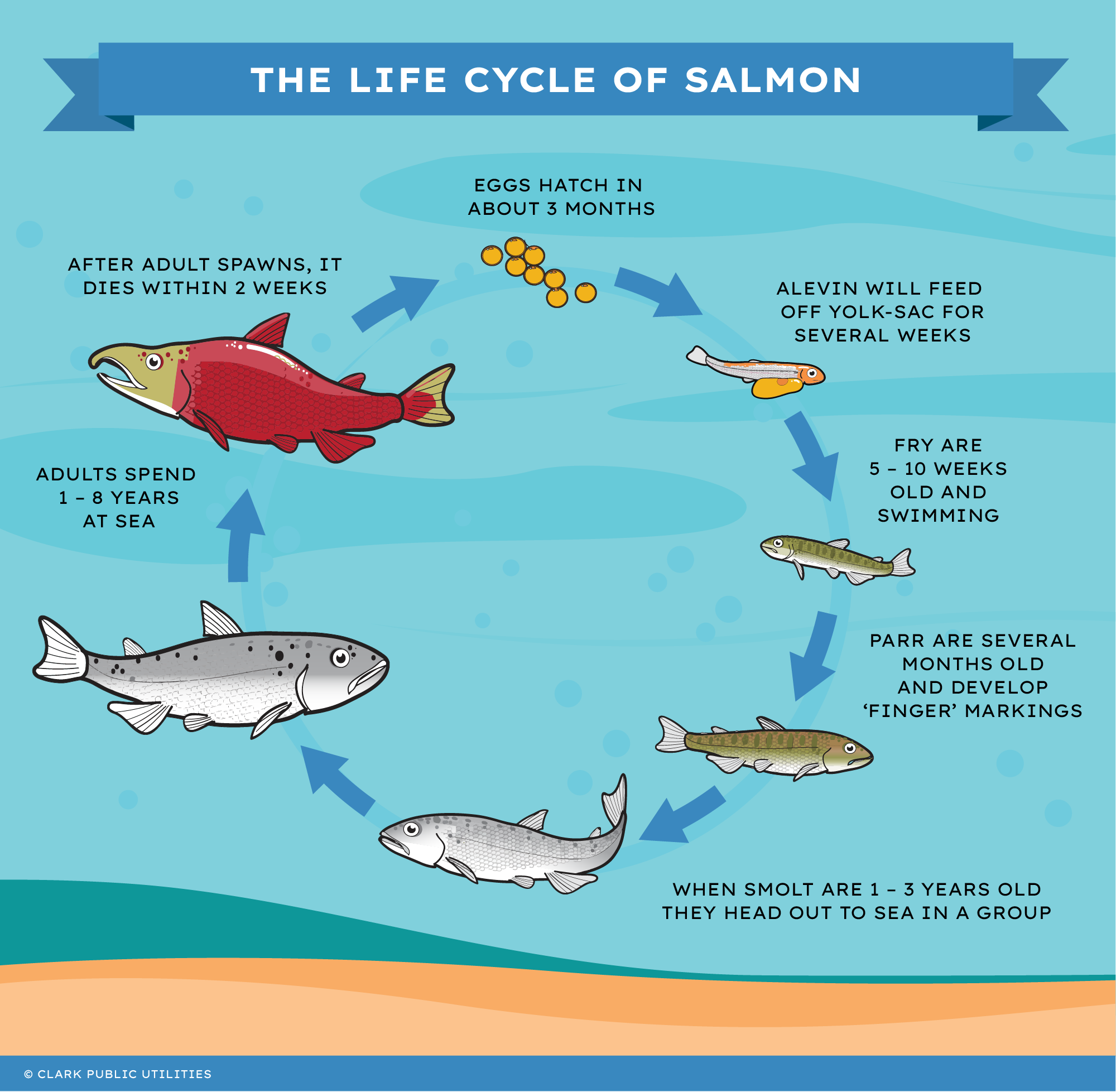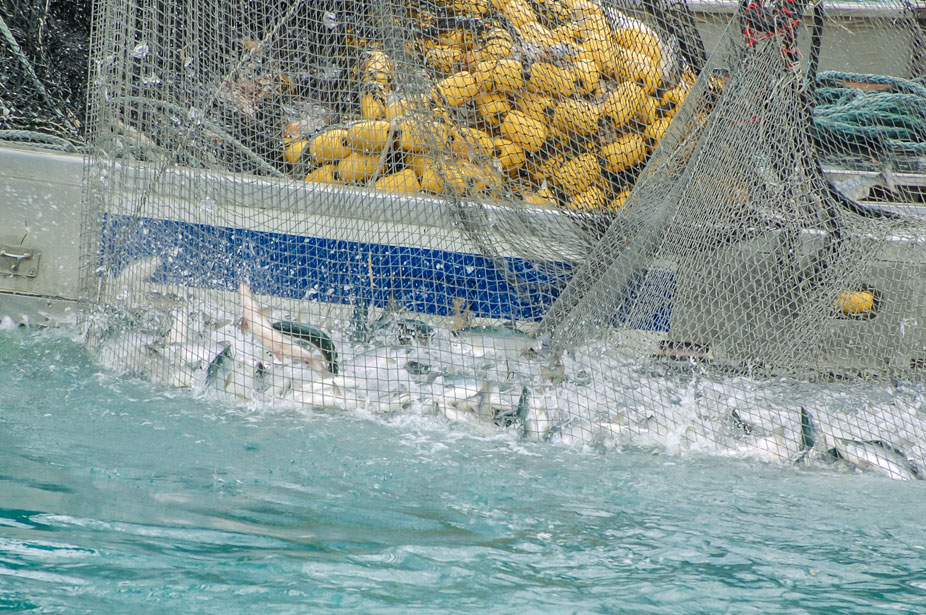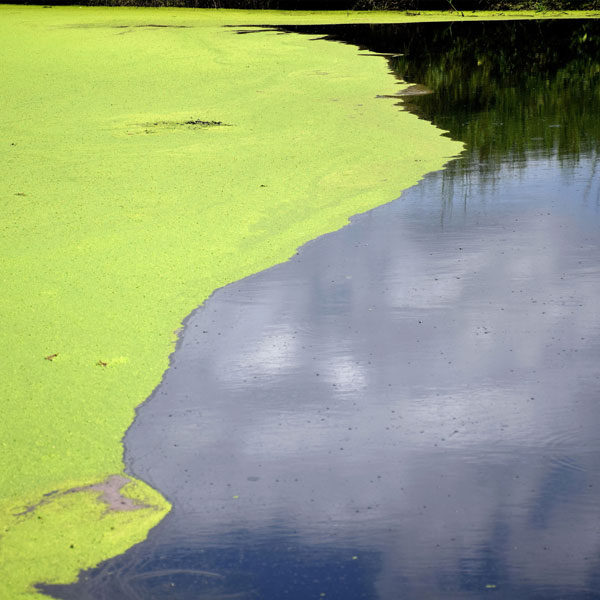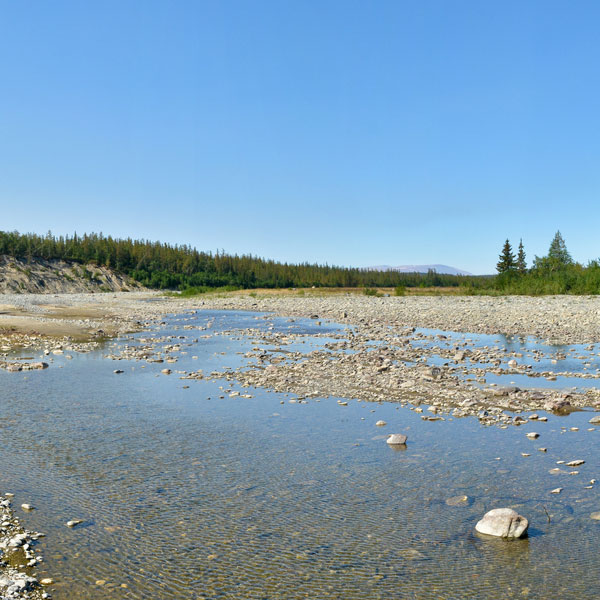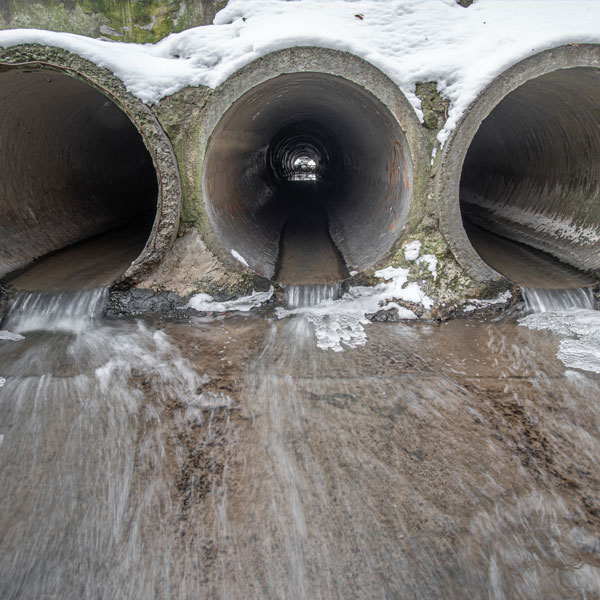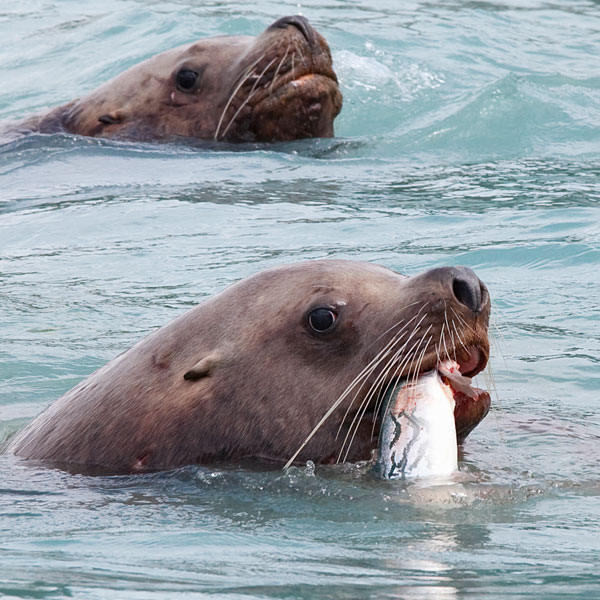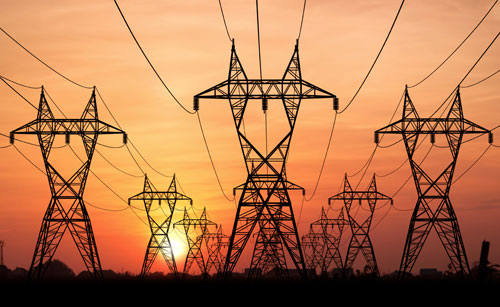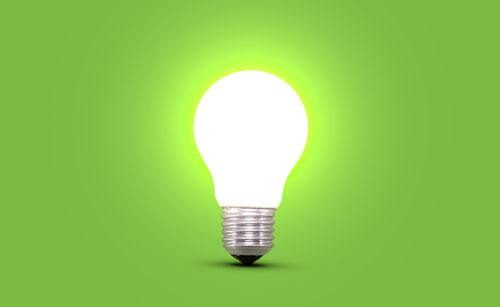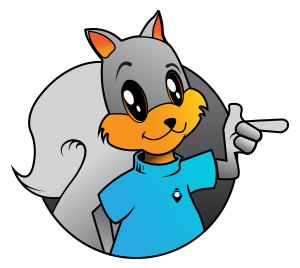Washington state streams and rivers are home to five salmon species: Chinook (also called kings), Chum (also called dogs), Coho (also called silvers), Pink (also called humpies), and Sockeye (also called reds). Salmon are important to the Pacific Northwest. They are vital in our ecosystems and food chain. Salmon fishing is also important for our economy and play an important role in indigenous culture. So let’s learn more about these fascinating creatures!
The life cycle of salmon
Even if you don’t know much about salmon, you likely know something about their incredible lifecycle. Salmon are born in freshwater rivers, lakes, and streams, where they grow into adults. When they’re ready to lay their eggs, they return to the same freshwater spot where they were born.
This means they must swim upriver, against the flow of water. This is no small feat and it can take weeks for the salmon to reach the spot where they’ll spawn and lay eggs. Once the eggs are laid, the salmon die.

Salmon switch between fresh water and saltwater, which most fish do not do. Salmon are called anadromous, which means they hatch in freshwater streams and rivers, and then migrate out to the saltwater environment of the ocean to feed and grow.
Salmon and the ecosystem
Salmon are a source of food for many animals, from orcas and grizzly bears to osprey and humans. Plus, once salmon die, their carcasses provide vital nutrients for freshwater ecosystems, including the nitrogen and phosphorus that streamside vegetation need. Salmon are so important that they’re considered keystone species, or a species that entire ecosystems depend on. Each part of the salmon’s lifecycle is deeply connected to the surrounding environment.
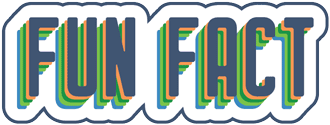
Salmon use their great sense to smell and the earth’s magnetic field to find the river where they were born.
Salmon in tribal culture
Clark County, Washington was the traditional lands of the Chinook and Cowlitz tribes. Additionally, other tribes from across the Pacific Northwest would come to this area to trade. Salmon have been important to these indigenous communities for countless generations. Not only are salmon a primary food source and source of economic benefit, but salmon have long been a part of religious services and cultural stories. Salmon are embedded in cultural identity. Learn more about tribal salmon culture at the Columbia River Inter-Tribal Fish Commission.
Salmon and the economy
The commercial and recreational value of salmon is staggering. In Washington alone, fishing is estimated to support 16,000 jobs and $540 million in personal income. Between commercial fishing activities (including retail sales, wholesaling, and distributing), sport fishing, subsistence fishing, and recreational and tourist activities, salmon are an important part of our economy.
Threats to salmon
Today, 14 species of salmon and steelhead trout are endangered in Washington. It’s critical to many different groups of people that we support and protect our salmon populations. That is why our StreamTeam devotes countless hours to salmon habitat restoration. There are multiple risk factors for salmon.
Climate change
Salmon are especially sensitive to climate change, as they need cold, clean water at every life stage. Water temperature affects the development of eggs. Even migratory patterns align with optimal river temperatures.
Habitat degradation
As the human population continues to grow, more land and water are required for our homes, roads, and other needs. These human needs often compete with the habitat needs of salmon.
Fish barriers
In Washington, there are many different barriers, such as culverts, that prevent salmon from reaching their spawning grounds.
Predators
The food web is complex, and one change can have far-reaching effects. As humans have changed the land, the food web has become more beneficial to predators and less beneficial to salmon. For example, sea lions are also protected and their populations have grown. Now, sea lions are responsible for eating a massive quantity of salmon.
How to help salmon
A great way to help salmon is by restoring habitat. Reintroducing native plants, removing invasive plants, and cleaning litter are all activities that have a huge payoff. These actions will reduce water temperature and improve water quality. Another great way to help salmon? Volunteer with StreamTeam!
Salmon identification
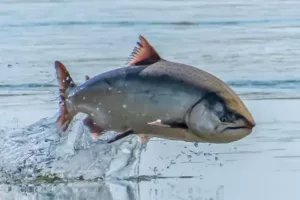
Oncorhynchus tshawytscha
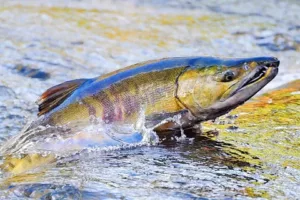
Oncorhynchus keta
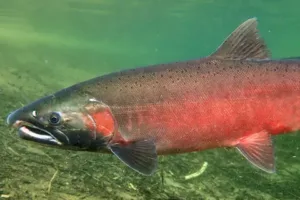
Oncorhynchus kisutch
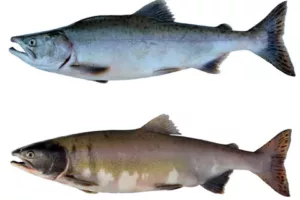
Oncorhynchus gorbuscha
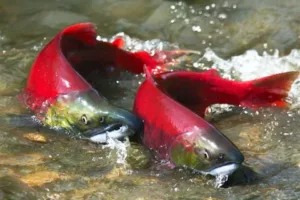
Oncorhynchus nerka
Salmon in the Classroom
Clark Public Utilities is proud to sponsor the Salmon in the Classroom program, which helps teachers raise coho salmon at their schools in classroom aquariums. Students care for the fish, learn all about them, and ultimately release them back into local streams. Learn more about Salmon in the Classroom!

